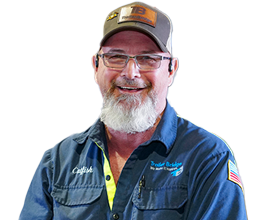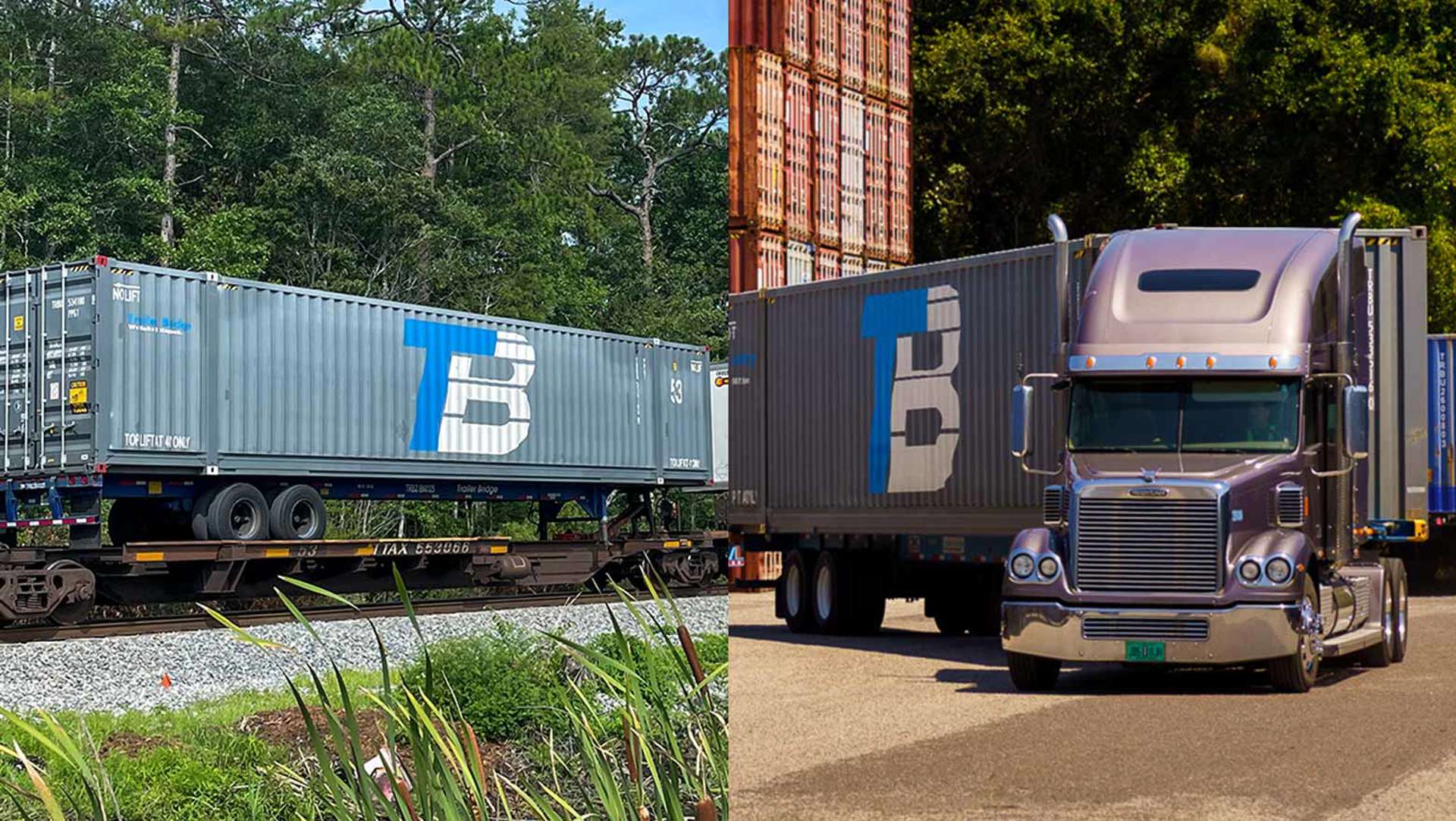
Intermodal vs. Trucking - Which Option is Best?
When it comes to moving freight domestically, you have two primary options: intermodal and over-the-road (OTR) trucking. But how do you determine which solution is best?
If you are like many businesses, you want a domestic transportation solution that is both economical and efficient. This is understandable, as transportation costs are responsible for around 60% of a shipper’s logistics expenses.
With such a high cost, the decisions you make for your supply chain have a big impact on your business’s bottom line. To help you in this process, we’ve put together this post outlining 6 crucial factors to consider when choosing between intermodal and trucking.
Whether you’re looking to save money on shipping costs, reduce transit times, or increase environmental sustainability efforts, this guide will provide you with valuable insights into both transportation methods to help you make the right choice for your business.
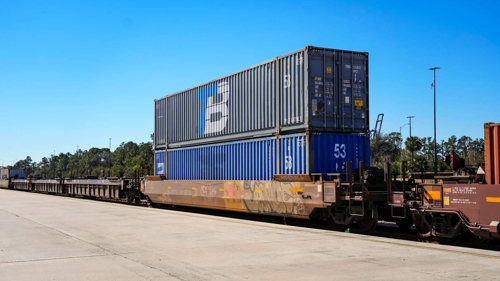
What is Intermodal Transportation?
Intermodal is defined as moving freight using two or more modes of transportation. This is done by loading cargo into an intermodal container, which is then transferred between multiple carriers during its journey. Intermodal shipments traveling solely within United States typically use 53’ containers and partially international shipments use 20’ or 40’ containers. While intermodal can include any of the major transport methods (truck, rail, ocean, and air), this blog will focus on intermodal considerations for domestic transportation.
How Does Intermodal Transportation Work?
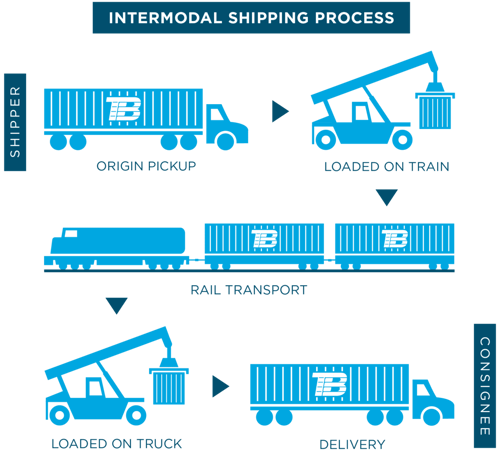
A load will follow these steps during an intermodal shipment:
- A truck with an empty container is sent to the shipper’s location where it is loaded with freight.
- The full truck hauls the container to a nearby rail terminal where it is loaded on a train. This leg of transport where freight is moved a short distance between the shipper and the terminal is also referred to as drayage.
- The container will spend most of its journey on the train, traveling from the origin rail terminal to the destination rail terminal.
- At the destination terminal, the container is picked up by a truck and hauled to the receiver’s location through a drayage service.
- After the freight is delivered, the empty container is returned to the raid yard, sent to pick up another shipment, or stored until it’s needed for another load.
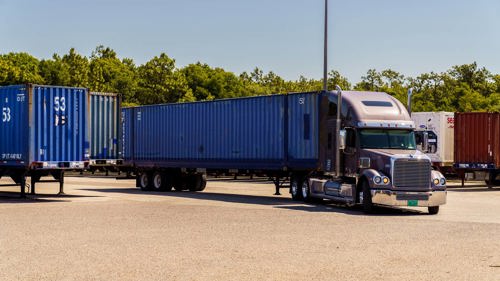
What is OTR Trucking?
Over the road (OTR) trucking is also commonly called long-haul trucking and involves moving freight over long distances using a large truck with an attached trailer. In the United States, trucking is the primary method used to move goods domestically, transporting 72.2% of the country’s freight, by weight.
How Does OTR Trucking Work?
During an OTR shipment, goods are picked up from the shipper and loaded onto a container or trailer, where they remain for the entirety of the trip until delivery. The type of equipment used depends on the type of freight being shipped. Here are some of the most common ones:
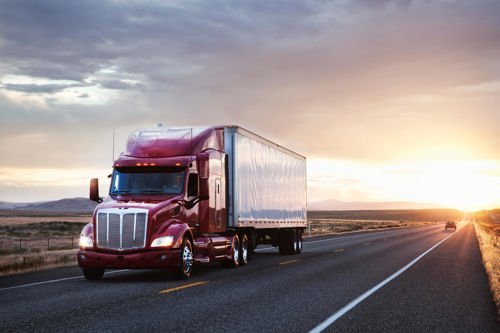
A fully enclosed semi-trailer that is loaded through two swinging doors in the back. Unlike an intermodal container that must be placed on a chassis, the chassis and enclosure on a dry van is a single piece. The enclosed space protects goods from the elements, but it is not temperature-controlled, making it best for non-perishable items.
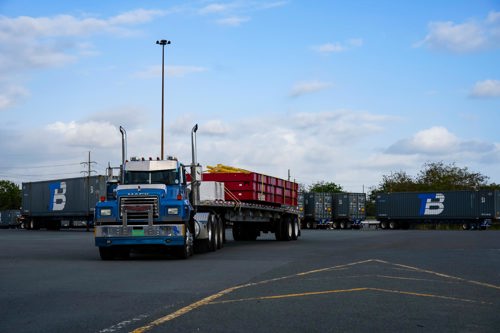
These trailers have a flat, open trailer where freight is loaded and secured. Due to their accessibility and capacity, flat bed trucks are used for oversized cargo, construction materials, and machinery.
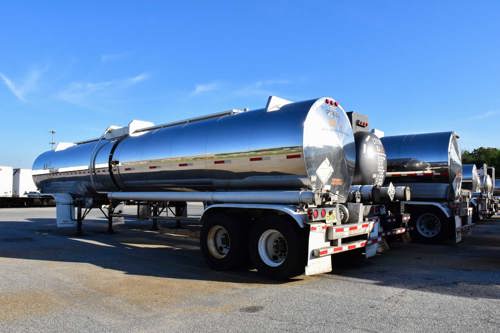
These trailers have rounded tanks that attach to the back of the truck. Dry tankers carry loose dry goods like grain or sand and liquid tankers carry both liquids or gases like corn syrup or liquid natural gas.
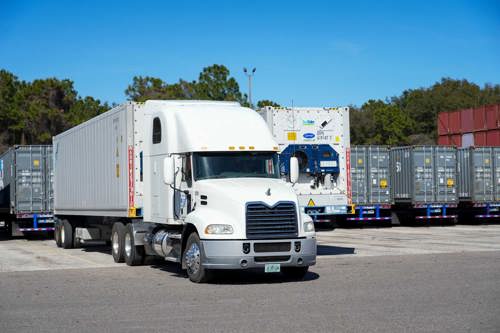
Reefers are similar to dry vans with a fully enclosed container, but they also have temperature-regulation technology to keep freight at a consistent temperature throughout the trip. They are commonly used for temperature sensitive goods like perishables, food, and medical supplies.
6 Factors to Consider When Deciding Between Intermodal and Trucking
1. Shipment Distance
Intermodal
One of the primary benefits of intermodal transportation is the potential for cost savings when shipping cargo 500 miles or more. In fact, shippers who switch from trucking to intermodal for long-distance shipments save an average of 10-40%.
Since rail is much more fuel-efficient than trucking, it keeps operating costs low, so you end up paying less per mile. Even with the last-mile drayage costs required to transport freight to and from the rail terminals, the cost savings over hundreds of miles means you still come out ahead.
Trucking
When shipping freight less than 500 miles, trucking is your best option. While it does cost more per mile, it is less expensive overall once the last-mile costs associated with intermodal are factored in.
Trucking also provides a direct solution for short distance shipments with a single mode of transportation, reducing unnecessary complexity and coordination costs that come with multi-mode alternatives.
2. Proximity to an Intermodal Ramp
Intermodal
Since rail transportation is a key component of intermodal, this option is most cost effective for shippers who have pickup and delivery locations within 100 miles of a railroad terminal. If your pickup and delivery locations are further than 100 miles, the cost of drayage to and from the railroad begins to negate the savings you gain by using rail transport.
In most cases, railroads operate near large metropolitan areas due to the high volume of cargo moving through. You can use this map to see all railroads and intermodal ramps in the U.S.
Trucking
Unlike intermodal, trucking transportation is widely available, no matter your proximity to a major city or transportation hub. So, if you find that you are shipping to areas that aren’t in proximity to you, then trucking is the easiest and most cost-effective option.
3. Freight Capacity
Intermodal
An intermodal train can carry the load of 280 trucks, giving it far more capacity in a single trip. Riding on rail, containers can also be double stacked on well cars to create additional capacity, making it ideal for high-volume shippers.
Because of the sheer amount of space, rail also provides a stable and reliable method of transportation, whereas truck availability can vary a lot based on demand. This makes it a great option if you are a high-volume shipper or looking for an alternative when demand for trucking is high.
Trucking
All trucks have space and weight limitations for how much freight they can carry. If your shipment goes over these limitations, then it is necessary to source another truck to move the remainder.
When availability is high, it can be easy to secure enough trucks to move all your freight. But in times of limited capacity, driver shortage, or equipment scarcity it can be difficult to book and coordinate the needed transportation to keep your supply chain moving.
4. Moving Heavyweight or Over-dimensional Cargo
Intermodal
Since intermodal containers have fixed dimensions, they can’t be altered to accommodate over-dimensional cargo. Additionally, the cargo weight allowance for intermodal is 2,500 pounds less than truckload.
Trucking
Domestic trucking is the preferred option to move heavyweight or over-dimensional cargo since there are multiple haul options to accommodate a wide variety of freight. Flatbed is one of the most common types of equipment used in these situations because its open design makes it easy to load/unload large, heavy, or unusually shaped freight.
5. Transportation Speed & Flexibility
Intermodal
Since intermodal requires coordination between multiple transportation methods, it often takes 2-3 days longer than truckload would. While a train and truck can complete the journey in approximately the same amount of time, intermodal requires extra days on the front and back end for container transfer and drayage.
When using intermodal, your shipment is being transported along with many others, meaning there is little to no room for flexibility once your container is on board. If there is congestion on the tracks causing delays or if your shipment needs to be rerouted, there is little you can do to change it.
Railroads also have prompt departure and arrival times that you must follow if you want your freight included in the trip. This means pickup and delivery times are largely determined by the rail line, and you need to coordinate your operations to fit their schedule.
Trucking
OTR trucking is your best option for both speed and flexibility. Transporting cargo by truck averages 2-3 days less than intermodal. Since your freight stays on the same truck for the entire trip, no additional time is required to coordinate carrier changes or move cargo between truck and train.
Trucking also provides options to expedite your shipment such as team driving, where two drivers are assigned to your cargo so there is no down time due to rest requirements.
If you need to make a change in your transportation route or schedule, trucking provides the flexibility to make it possible. Most times, truckload means you are working with a single point of contact dedicated to your load so adjustments can be made easily.
6. Environmental Sustainability
Intermodal
Railroad transportation makes intermodal more environmentally friendly because it can transport one ton of freight approximately 500 miles on one gallon of fuel, making it 3-4x more fuel efficient than transportation by truck.
It has been found that switching your freight from truckload to intermodal can reduce Co2 emissions by 30%, while also cutting down overall pollution and road congestion.
Trucking
Trucks require much more gasoline to operate than rail, making it a less sustainable transportation option.
The United States Environmental Protection Agency has also said that freight transportation is a primary contributor to air pollution, with heavy-duty trucks as the fastest growing source of these emissions.
Choosing the Best Transportation Method for Your Freight
Now that you have learned the main differences between intermodal and trucking, you can feel more confident in choosing the ideal option for your business.
Here is a quick reference listing the best scenarios for each method:
When Intermodal is Your Best Option:
- Your shipment is traveling more than 500 miles
- Pickup and delivery locations are within 100 miles of a railroad
- You need consistent capacity for large volumes of cargo
- Creating a sustainable supply chain is important to your business
- Potential cost savings is more important than speed and flexibility
When Trucking is Your Best Option:
- Your shipment is traveling less than 500 miles
- Pickup and/or delivery locations are more than 100 miles from a railroad
- You are moving heavyweight or over-dimensional cargo
- Your supply chain requires flexibility
- Speed and opportunity for expediting are a priority

Need help deciding on the right domestic transportation option for you?
Talk to one of Trailer Bridge’s logistics experts today and we will work with you to create a custom transportation solution optimized for your business needs.
Related Articles



Stay Connected
Join the TB community to receive our quarterly newsletter, company updates, and valuable resource guides—created specifically to enhance your supply chain and support your success.
